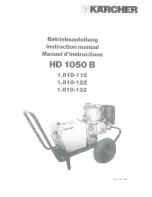
What to do if . . .
Cause . . .
Remedy . . .
. . . lime deposits appear on
the drum surface:
Not enough detergent has been
used.
–
Use a descaling agent which
must be stated by the
manufacturer to be suitable
for use in washing machines.
–
Use the correct amount of
detergent to cope with the
water hardness
. . . grey, greasy particles
cling to washed laundry:
Insufficient amounts of
detergent were used to break
down the particles of grease in
heavily soiled laundry.
–
Either add more detergent,
or use liquid detergent.
–
Before washing the next load
run a COTTONS 60°C
programme with liquid
detergent but without a load
to clean the machine.
. . . there are white residues
which look like powder deter-
gent on the washing:
The detergent contained
compounds (zeolites) to aid
water softening which are not
soluble in water. These have
ended up on the textiles.
–
Use detergents containing
no zeolites to re-wash the
load, and in the future. Liquid
detergents usually contain
no zeolites.
–
Try and brush off the
residues with a soft brush.
. . . liquid detergent does not
give the desired result:
Liquid detergents do not usually
remove stains such as fruit
juice, tea, coffee, wine etc.
–
Use a general purpose
washing powder containing
a bleaching agent, (check
first with the care label).
–
Pour stain remover (salts)
into the dispenser drawer
compartment
j
Put the liquid detergent into
a dispenser ball.
–
Never put stain salts and
liquid detergent together in
the dispenser drawer.
. . . The pump makes strange
noises.
These noises occur at the end
of a pump sequence as a
normal part of the operation.
They are not a fault.
Problem solving guide
33
















































